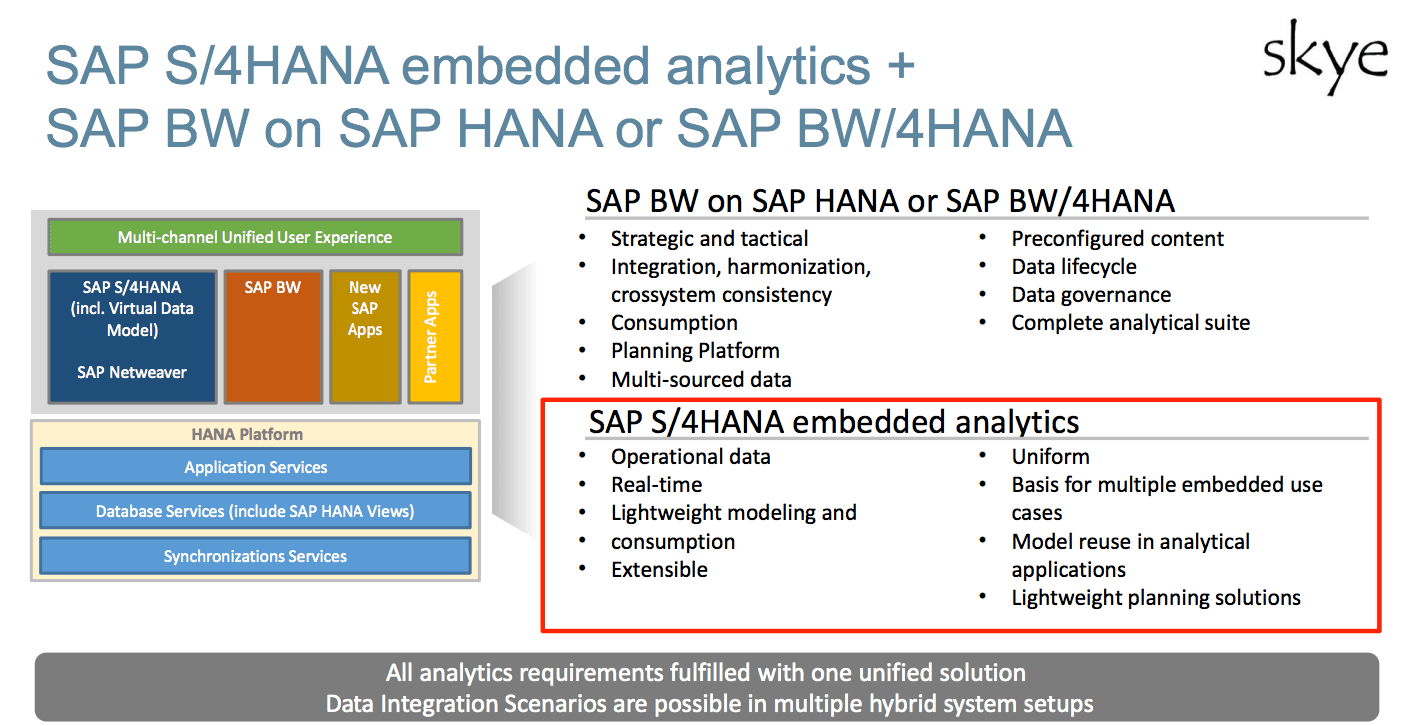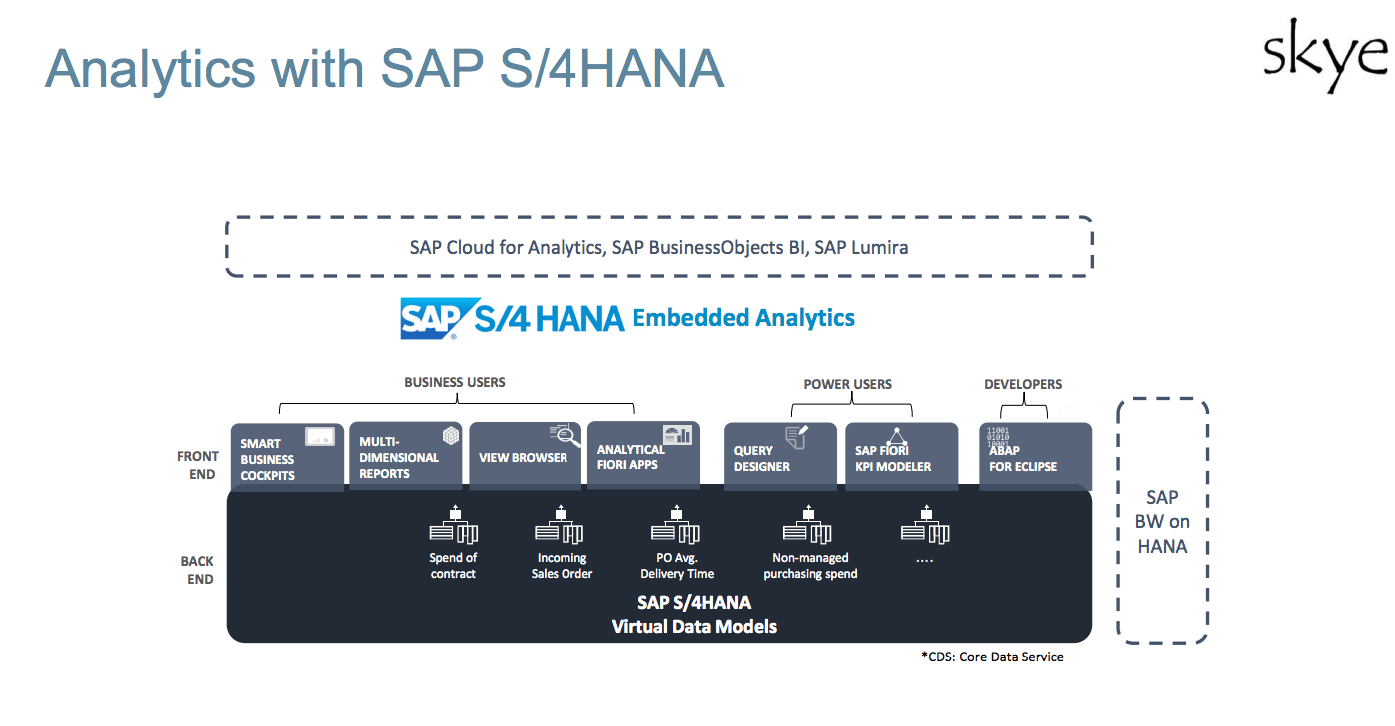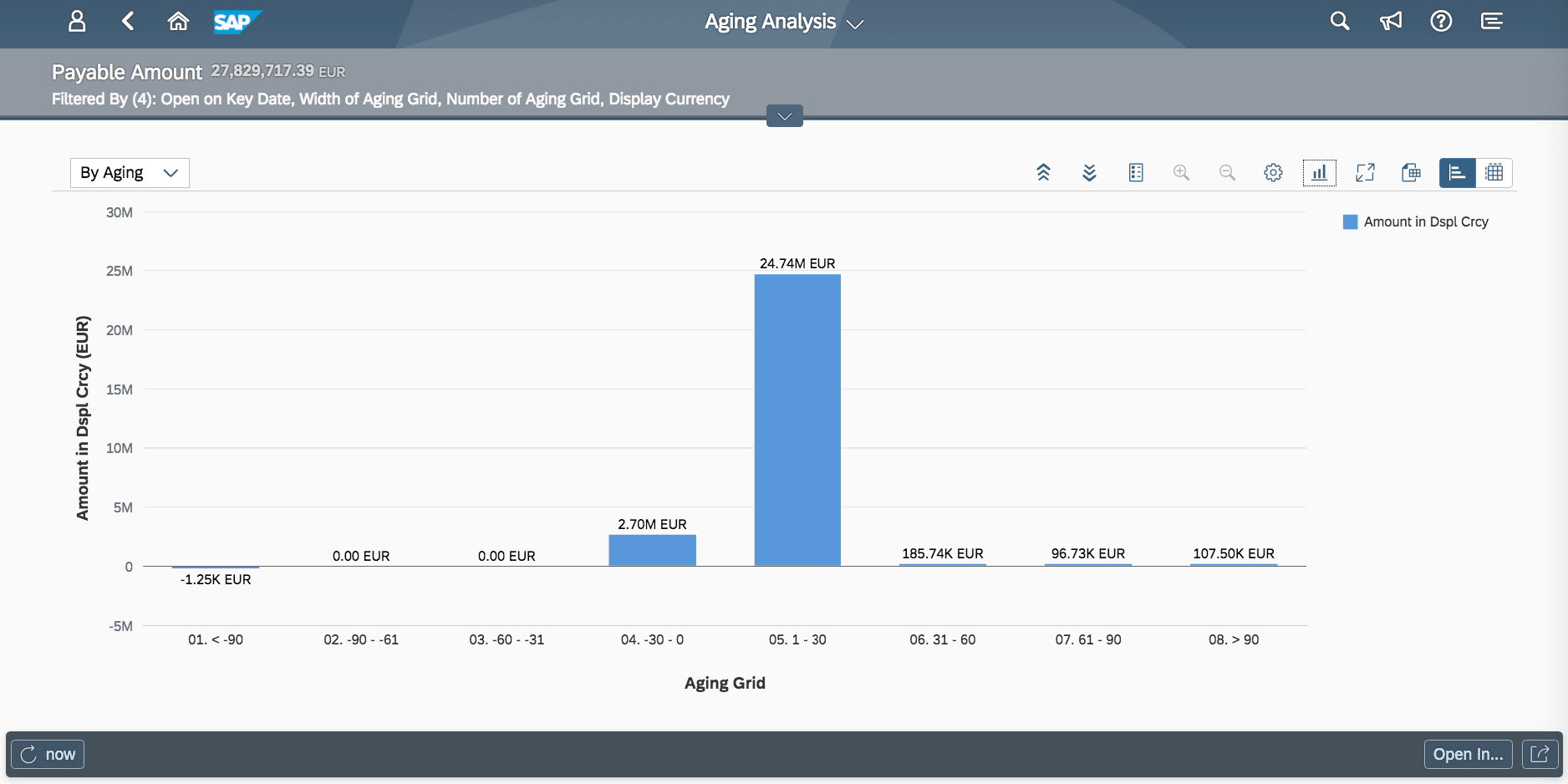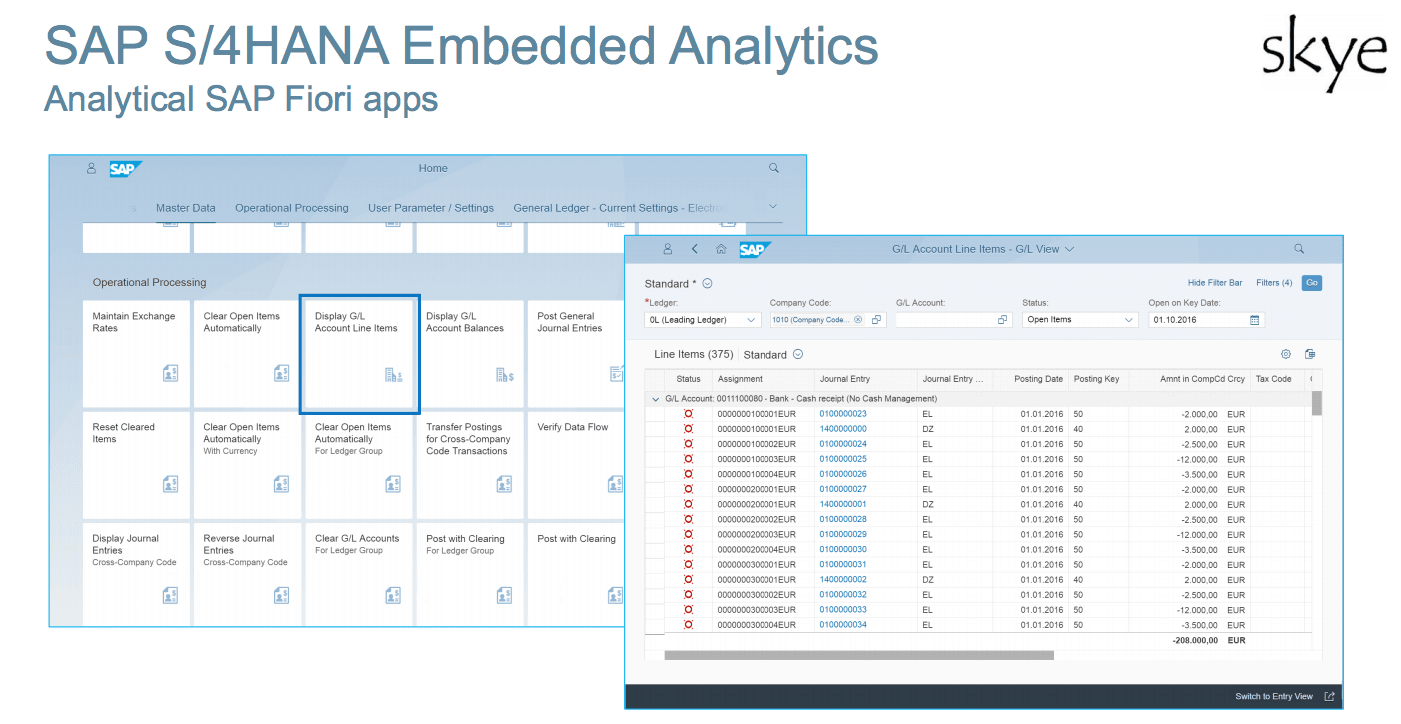Why Does S/4HANA Need BW4HANA for Analytics?
Executive Summary
- For years SAP proposed that applications on HANA would remove the need for a data warehouse.
- Now the message is changing, and BW4HANA is back in the mix.

Introduction
The original presentation of S/4HANA was that the reporting schemas would no longer be necessary because of HANA. Eliminating the data warehouse would be possible because S/4HANA would report directly off the column-oriented tables, optimized for reporting. Part of the point of S/4HANA was to minimize the use of the need for the data warehouse. The concept went that if all SAP applications used HANA, and a company used all SAP applications, they would no longer need a data warehouse. You will learn about a major inconsistency in SAP’s statements regarding S/4HANA.
Our References for This Article
If you want to see our references for this article and other related Brightwork articles, see this link.
Notice of Lack of Financial Bias: We have no financial ties to SAP or any other entity mentioned in this article.
SAP’s View on Embedded Analytics?
SAP described this as using embedded analytics, which we covered in the article What is the Value and Future of SAP Embedded Analytics?. Of course, this vision left out entirely the reports that go across applications, which still required a central repository, which we call a “data warehouse.” We quote from the following to illustrate how an SAP consulting company explains this undeniable fact.
To achieve this, you need a system that can collect, merge and harmonize data from various sources. A single S/4 system cannot achieve this. SAP does not recommend using embedded analytics to consolidate data from multiple systems, and it is meant for operational reporting only. Even though the S/4 system comes with an embedded BW system, it is not designed to be used as your enterprise data warehouse.
And illustrated in this slide.

And this quote from SAP.
Most of us would have for sure thought for once that Embedded BW on S4HANA would replace BW as whole and would not need BW in future. Which is kind of myth looking at the basic nature and capabilities of the EDW(Enterprise Data Warehouse). Its correct the Embedded BW can be used to support certain business processes on SAP Business Suite and S4HANA like BPC optimized. However, there are many other reasons why we can’t use Embedded BW for all the EDW needs. Based on many documents and notes following are the major reasons for which it becomes obvious to use SAP BW4HANA
Again, who created this “myth?” Let’s not be coy about this. SAP proposed this myth.
Over several years, I don’t recall telling people that HANA would eliminate the data warehouse. Quite the opposite and those telling me that I needed to get with the “brave new world of analytics” within each application were SAP consultants. Even in private, with no one listening, SAP consultants’ adherence to SAP talking points never ceases to amaze me.
Who Thought This Illogical Approach Would Work and Evangelized The Design?
Usually, the less technical the resource, the more they thought this would happen, with salespeople who had never personally worked with databases or analytics software being the most blatant. This was the future that HANA allowed. They topped this off by proposing that only SAP had the vision to make this happen. The following quotation is verbatim.
Hasso Plattner always hated analytics systems. He saw them as a failure of the application to provide the reporting. His vision is to eliminate the data warehouse, and HANA is how he will do it.
SAP Analytics Products are All Jumbled In
Another undiscussed issue is how many products are now part of this solution. Let us review a slide.

This slide is already a bit out of date as Lumira has been discontinued, and Cloud for Analytics is the replacement product. But let us review all of the products that are part of this design.
- SAP Cloud for Analytics
- SAP Business Objects
- SAP Lumira
How much are all of those licenses going to add up to? Is this us, or does this appear like a confusing combination of items?
The New Reality of S/4HANA and the Data Warehouse
Years after, SAP presented this vision, and they are now changing their story regarding data warehousing. SAP is now proposing that customers use something called embedded BW. This is the junior version or BW4HANA, the more advanced version that is merely the rebranded stand-alone BW, but which, of course, only runs on HANA and pushes out other database vendors from the mix. Embedded BW is implemented within S/4HANA and, according to SAP, is for “strategic analysis” rather than the standardly embedded analytics for more or less canned analytics.

We have been saying for some time that the embedded analytics in S/4HANA are simply for canned analytics. Because they are canned, they don’t even leverage HANA as they can be pre-compiled, with only net change information updated.

One of the reasons it’s straightforward to overestimate the number of apps or tiles of functionality included in S/4HANA is because so many of the tiles are just reports, as the slide above illustrates. Once in the transaction/report, there usually is not much that one can do other than some necessary searching or filtering.
Why BW4HANA?
It is understood that more analytics than the canned “embedded analytics” are required for non-standard reporting, but why did SAP port an obsolete product like BW to S/4HANA? One of HANA’s main points was that a heavy overhead BI environment with their hefty maintenance overheads like the SAP BW was supposed to be no longer necessary.
Column-Oriented Tables: A Simplified Data Model
Recall the simplified data model? We covered the article’s topic and contradicted the notion that S/4HANA had a simplified data model in the article Does S/4HANA Have a Simplified Data Model?
However, while the data model is no more straightforward, it is, that is, column-oriented tables, which are certainly more optimized for read access or reporting and analytics. The idea that SAP presented was that a more straightforward, lighter BI environment, for instance, like Lumira (now discontinued), SAP Analytics Cloud (not yet ready to be implemented), or a mature visualization product like Tableau or Qlik was supposed to be able to be used. So far, the number of HANA applications has been for the BW, which speeds BW but does little to reduce the lengthy reporting queues behind most BW implementations globally.
Continuing to Work Off of Data Cubes?
Something else odd was that graphics show both embedded BW and BW4HANA using data cubes. They also work off Core Data Services that feed the data cubes, which we covered in the article How to Understand HANA Lock in with Core Data Services.
Again, why are either of these products using data cubes? Data cubes are not cubes; they are star schemas designed to speed row-oriented tables. Columnar tables are used so that they can be read and accessed very quickly without any intermediate object, such as a star schema.
SAP Backtracks on the Design Proposals of HANA
The story around SAP analytics keeps getting weirder and more complicated, and it contradicts what was supposed to be the primary benefits of HANA.
With new articles coming from compliant SAP consulting companies, we have the explanation that companies still need a data warehouse, which means that SAP’s vision of entirely embedded analytics has failed. Alternatively, should we say, what SAP stated about doing away with the data warehouse because of the embedded analytics will never come true? We knew it would never come true, as it never made sense. We told many SAP consultants this in discussions, but they overrode the concerns and told us this all made sense at SAP. Five or six years after the fact, SAP is finally changing its messaging (although not admitting it is changing).